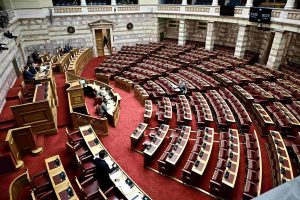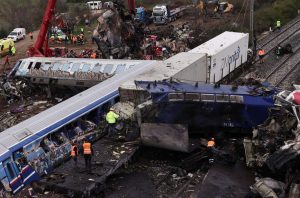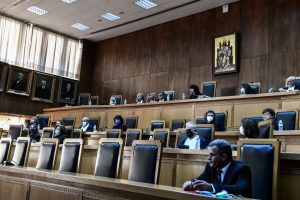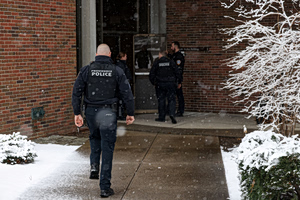The CEO of the OSE, Panagiotis Terezakis, shed some light yesterday on the critical hours immediately after the Tempi tragedy and the movements of the recorded conversations between the Larissa stationmaster and two separate train drivers. Specifically, 16 days after the front page report by Vasilis Lampropoulos in TO BHMA (“Tempi tampering casts new shadows over the tragedy”, 24 March 2024), which revealed a falsification of the exchanges published the day after the tragedy (on 1 March 2023), it has been admitted for the first time that the audio files were indeed tampered with. At the same time, Mr Terezakis called on the judiciary to proceed with a relevant investigation and on the journalists who published the content of the “manipulated” recordings to explain themselves.
Speaking to the journalist Aris Portosalte on Sky radio, Panagiotis Terezakis noted: “It was edited. From what I understand—and I may have misunderstood—a part of the conversation was removed from the conversations whose contents were reported in the media. Now, as for what that could mean, who cut it and why they cut it… I have stated repeatedly and publicly that we have provided communication details for everyone at the OSE who was involved in this process, who handed over audio recordings at various times. All of our contact details, our mobile phone numbers, e-mail addresses and official OSE e-mails are at the disposal of the investigating authorities, who can contact us whenever they want to find out what was handed over, how it was handed over, and where the material was taken.”
Which leaves no room for misinterpretation, he added: “This verbal exchange exists, it was recorded, and it may not have been handed over in its entirety—segments may have been cut and others spliced in.”
Immediately afterwards, he called on the media employees who rushed to publish the contents of the edited audio files less than 24 hours after the two trains collided, causing the deaths of 57 people, to clarify what exactly happened with the material: “That is probably something the journalists responsible for this reportage should explain, saying whether they cut or didn’t cut in addition to explaining where and if they got the material.”
“It would be utterly pointless”
Referring to the possibility that the editing was performed by the OSE, he made his position crystal clear: “At OSE, we had no reason to cut or manipulate anything. Besides, it would be utterly pointless, given how many times the evidence has been handed over to the investigating authorities, which have confirmed the files were identical each time.”
Nonetheless, he did disclose that the disputed dialogs were also received by e-mail by high-ranking OSE executives, which turns what we knew until now on its head: namely, that access to the original recordings and the place where they were kept was restricted to specific executives, who handed a CD containing copies of the files over to the Hellenic Police three days after the accident. “An email was sent. That is why I say these emails should be looked into. The email accounts should be accessed to see if mails were send and to whom. To put an end to the misconception that they were sent, shared, and so on,” he explained.
It should be noted, however, that it was TO BHMA (“Sham investigation into Tempi“, 7–4-2024) that first revealed that the audio files had gone places for which there was no possible justification, stating that there is “clear new evidence that the audio material was removed by OSE executives mere hours after the tragic incident.”
Panagiotis Terezakis’ startling revelations have added a new dimension to the case, which was catapulted all the way into Parliament by the original report in TO BHMA with the motion of no confidence moved against the government by PASOK together with other opposition parties.












